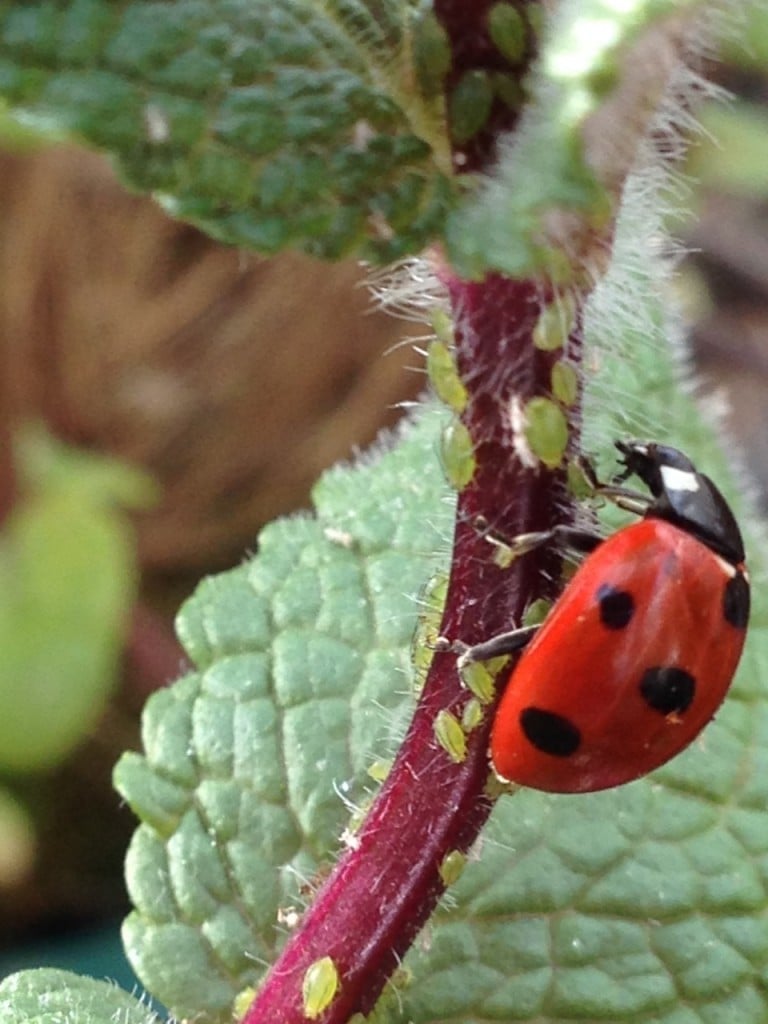You don’t need pesticides to keep your garden and greenhouse healthy, says Jean Vernon.
Here are ten great ways to deal with garden pests without using poisons.
Last month I outlined ten reasons not to use pesticides in your greenhouse and garden. So I thought it would be useful to provide ten ways to deal with garden pests without costing the earth. Most of these can be used in a greenhouse but they are all techniques that can also be used around your garden. It’s all about understanding nature and being more interactive with insects and wildlife.
The best bit about being proactive with garden pests is that you learn more about garden wildlife and the pests themselves.A few aphids don’t spell disaster. While you are inspecting your plants for pests you actually assess plant health and the needs of your plants and learn to nurture them better. Regular attention will spot a pest issue quickly and enable you to employ the best remediation method. If you spot the caterpillar eggs before they hatch you can prevent your crops being decimated.
By simply keeping your plants well fed and properly watered, you reduce their stress and make them less susceptible to attack.
them less susceptible to attack.
1) Water jet – if you find your roses are covered in aphids, you can wash them off with water from a hose. The power of the water jet will blast the little critters from your tender plant stems to the ground, where ground feeding, insect eating birds like robins and wrens will devour them with relish.
2) Companion planting – prevention is better than cure. Some plants deter pests, usually because they smell or excrete substances that the pest can’t tolerate. A good example of this is Tagetes (French marigolds) that will repel whitefly. Simply grow the at the base of susceptible plants (like tomatoes) and the strong smell deters the pest and keeps your plants pest free. It’s a useful and effective technique to use in the greenhouse.
3) Squash – if you are not squeamish you can squash offending bugs as you find them or simply remove them and feed them to the birds. This is a good method to use for Lily beetles, slugs and caterpillars. Manual removal makes you look carefully at your plants and deal with the pests on sight and if you don’t spray, you don’t add a dubious salad dressing to your plants.
4) Barriers – if you can stop the pest reaching your plants then you can save them from destruction. Barriers are often best used in conjunction with other pest control methods for the very best results. They can be breached by leaves or washed away by heavy rain, but copper bands and gritty barriers are useful in the war against slugs. Fleece and mesh barriers can also be used to prevent flying pests from reaching your plants. Be warned though; if you cover your crops with a fleece barrier make sure the plants don’t need pollinating. Bees and pollinators cannot fly through horticultural fleece.
5) Bio control – harness the power of nature in your war on pests. Just as birds, hedgehogs, toads, snakes and lizards will relish a feast of tasty slugs, bugs and caterpillars; there are also insect predators  that feast on garden pests. Hoverflies and their larvae are fantastic garden pest control, even wasps will devour literally tons of pests in early spring, while the humble ladybirds emerge just as the aphids start to infest tender garden shoots. You can even buy biological controls for greenhouse pests and release them under glass for targeted control.
that feast on garden pests. Hoverflies and their larvae are fantastic garden pest control, even wasps will devour literally tons of pests in early spring, while the humble ladybirds emerge just as the aphids start to infest tender garden shoots. You can even buy biological controls for greenhouse pests and release them under glass for targeted control.
6) Carnivorous plants – if flies bug your greenhouse, then grow some insectivorous plants. Saracenia are perfect for catching those annoying flies that frequent greenhouses and conservatories. The do it silently and without any fuss or smell.
7) Traps – some garden pests can be trapped. Slugs especially can be lured into beer laced slug traps to meet a soporific end. Or use yellow sticky traps to monitor flying pests in your greenhouse.
8) Decoy plants – Some plants can be used to lure pests away from your precious crops. Nasturtiums are a great lure for the cabbage white butterflies. The adults lay their eggs on the fleshy leaves and if you plant a clump away from your brassicas they will reduce the caterpillar damage on your precious kales and cabbages.
9) Wildlife – work with nature and create a wildlife friendly garden. Feed the birds and plant fruit bearing plants to support them through the winter. Install bird boxes and hedgehog houses to provide shelter and nesting sites and keep your garden free from pesticides to allow the natural balance to restore.
10) Disease resistance – choose to grow plants that offer good resistance to disease. If you know that a particular disease affects your plants, then choose varieties that show resistance. For example many roses are resistant to blackspot and other rose diseases making them easier to grow with better results.










